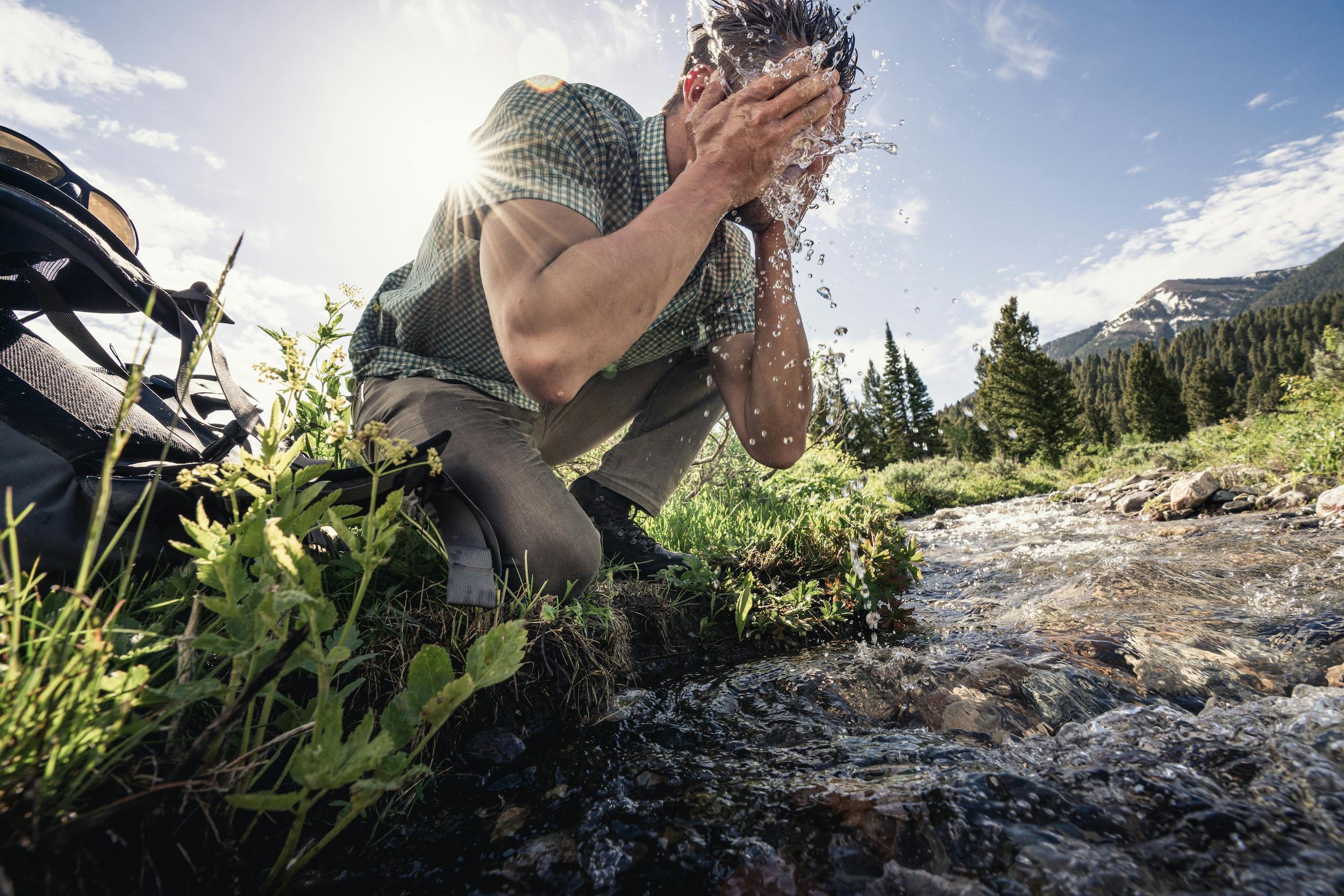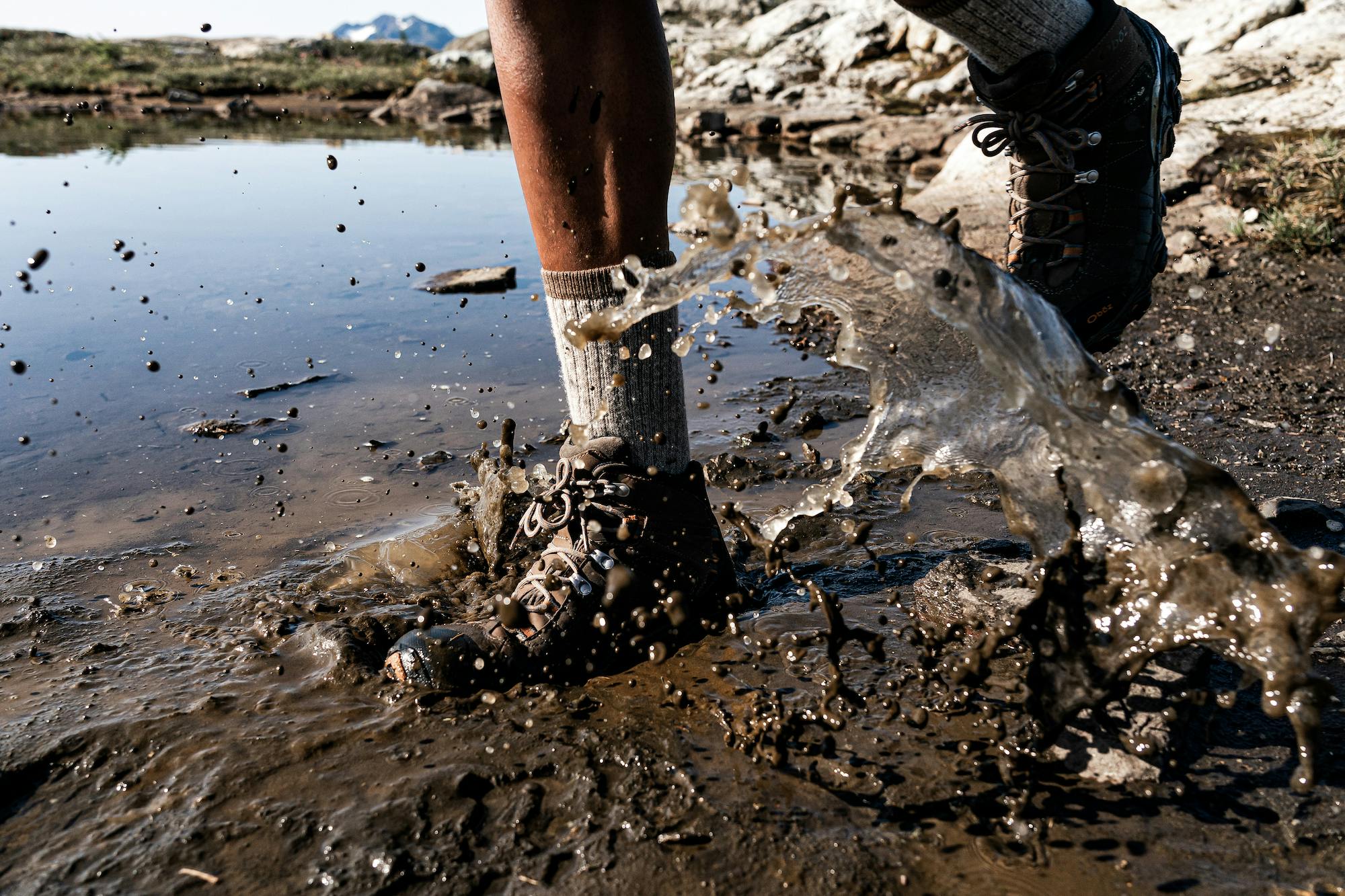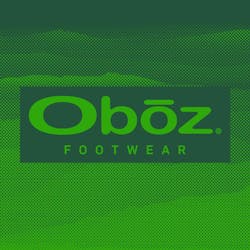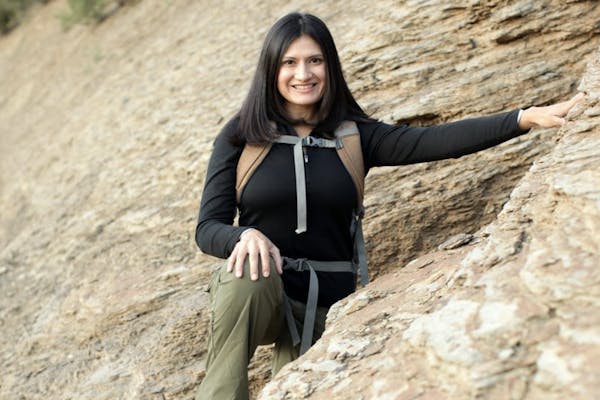Authors: Sea to Summit x Oboz Footwear
7 insights on washing, airing-out, and leaving no trace
Entering the world of hiking and camping provides us with an opportunity to re-think a lot of what we know about keeping clean and personal hygiene. Does a bear poop in the woods? Yes. And, so do humans. However, the difference between us and bears is that we have to learn how to do so properly. Taking care of ourselves, arguably, may be one of the most important business matters on the trails. While it's no big deal to stink, it's another thing to end up with a nasty stomach bug in the middle of nowhere because you didn't know any better. With that said, we teamed up with our friends at Sea to Summit to do you a solid (pun intended) and run through all the personal hygiene situations you may need to troubleshoot on the trail.
Leave The Grime Behind and Leave No Trace
While in our natural habitats, we may not often consider the sewage treatment plants, recycle centers, and waste management that regulate our filth levels. Out in the wilderness? We are quickly reminded of this luuxy .
Things to be mindful of while out on the trails are proper disposal of human waste, the kinds of personal care products you pack in (and out), and how to properly use them. An example of this could be as simple as brushing your teeth and realizing you’re unsure of where to spit the toothpaste. Instead of panicking and just spitting it on the ground, leave no trace by using a trash bag and pack it out with you when you go.
Okay, you filthy animals. Let's jump into everything you need to stay clean on the trail while leaving no trace.

Washing Outdoors
Be mindful of the kind of soaps and toiletries you use. Look for Leave-No-Trace-friendly products like Sea to Summit’s biodegradable Trek & Travel soaps.
Empty out any soapy water on the ground about 70 steps away (200 feet) from any waterways, scattering the water as broadly as possible.
Washing Hands
Sadly, it is more likely for you to pick up a stomach bug on a camping trip compared to when you are home. Keep those hands in tip-top condition, and be sure to wash after using nature’s toilet and before handling food.
When you have access to water, set up a small hand-washing station with a device like the Pack Tap and BIODEGRADABLE SOAP (all-caps emphasizes how imperative this is for leaving the ecosystem in which you’re exploring better off than when you arrived).
Poop, Pee, and TP
We will get straight to the point here. When you need to pee, find a spot at least 70 steps (200 feet) from any water source and let it flow.
Poop is more complicated. When nature calls, you’ll need to dig an 8-inch-deep hole at least 70 steps from your camp, the trail, and any waterways. The best site is somewhere sunny with loose soil because these conditions will make the waste decompose a lot faster.
More hardened folk can get by with leaves but sometimes you are not ready to give up the TP. It’s a good idea to store used TP in a waterproof bag or a specially made waterproof toilet roll holder.
Be sure to also fill in all your toilet holes properly. Depending on where you are, it might be okay to bury or burn biodegradable toilet paper, but the best practice is to carry it out with you in a tightly sealed bag.
Bathing
While you might have to forgo a few luxuries on a camping trip or hike, a shower doesn’t need to be one of them. If you have access to a fair bit of water, you can take a refreshing shower with the Pocket Shower and scrub-a-dub-dub with biodegradable soap.
Just like with the hand washing soap, it’s fine to let this soap touch the ground—just don’t let it near any lakes or streams. That also means you shouldn’t take a bath in a lake with any type of soap.
If a camp shower isn’t in the cards or it’s too cold to strip off, opt for a ‘trail shower’ and just clean your body with some biodegradable wipes.
Washing Your Hair
Greasy hair won’t kill you, but also may not make you stronger. An option is to pack a pocket-sized Trek & Travel Liquid Conditioning Shampoos to use during your camp shower. If you’re trying to keep your base weight down, the Trek & Travel Conditioning Shampoo soap leaves are a lighter option.
Washing Your Clothes
If you are only going on a trek for a few days, laundry can be omitted from the agenda. However, if you are on a backpacking trip for a week or more, the stink can become unbearable.
To wash your clothes during the trek, use a dry bag or a kitchen sink if you have access in a nearby town. If you’re in a place with a lot of mosquitoes, consider using Sea to Summit’s Citronella Wilderness Wash to repel mosquitoes naturally. Wash your clothes in the sink or bag with the soap, empty the dirty water out, and rinse with clean water.
Don’t wash your clothes directly in streams or lakes. Even biodegradable soaps can affect the health of the organisms in the water.
When you are done, wring them out thoroughly and hang-dry on a clothesline. Sea to Summit created a Clothesline, which weighs just 25g, rolls up into the tiniest pouch imaginable, and is high visibility—so you won’t literally clothesline yourself on your way to the toilet at night.
Keeping Boots and Insoles Fresh

At Oboz, we care about our footwear...a lot. In fact, we believe that your hiking footwear should be so comfortable that you don’t even remember you’re wearing any shoes at all. However, the undeniable support and comfort doesn’t excuse the boots from getting stinky along the journey. We recommend airing out your Oboz Footwear when able. This not only allows the boots to dry from any sweat/moisture build up, but also let's the “piggys” breathe! When airing out your hiking shoes, remove the insole completely, and place the boots to dry in a cool, shaded spot. Do not put boots directly on a heat source or in the beating, hot sun. Following your backcountry adventure, we always recommend cleaning and waterproofing your footwear as needed or seasonally.
In addition to caring for your trailblazing companions, be mindful of packing the appropriate socks for long days on your feet. Merino Wool isn’t your thick, itchy cabin socks, but a material that wicks out moisture away from the skin, controls temperature, and best of all, anti-microbial; aka non-stink. These socks can be hung to dry and reused throughout your journey. Not to mention, merino wool can also help to fight against pesky blisters and unnecessary rubbing.




